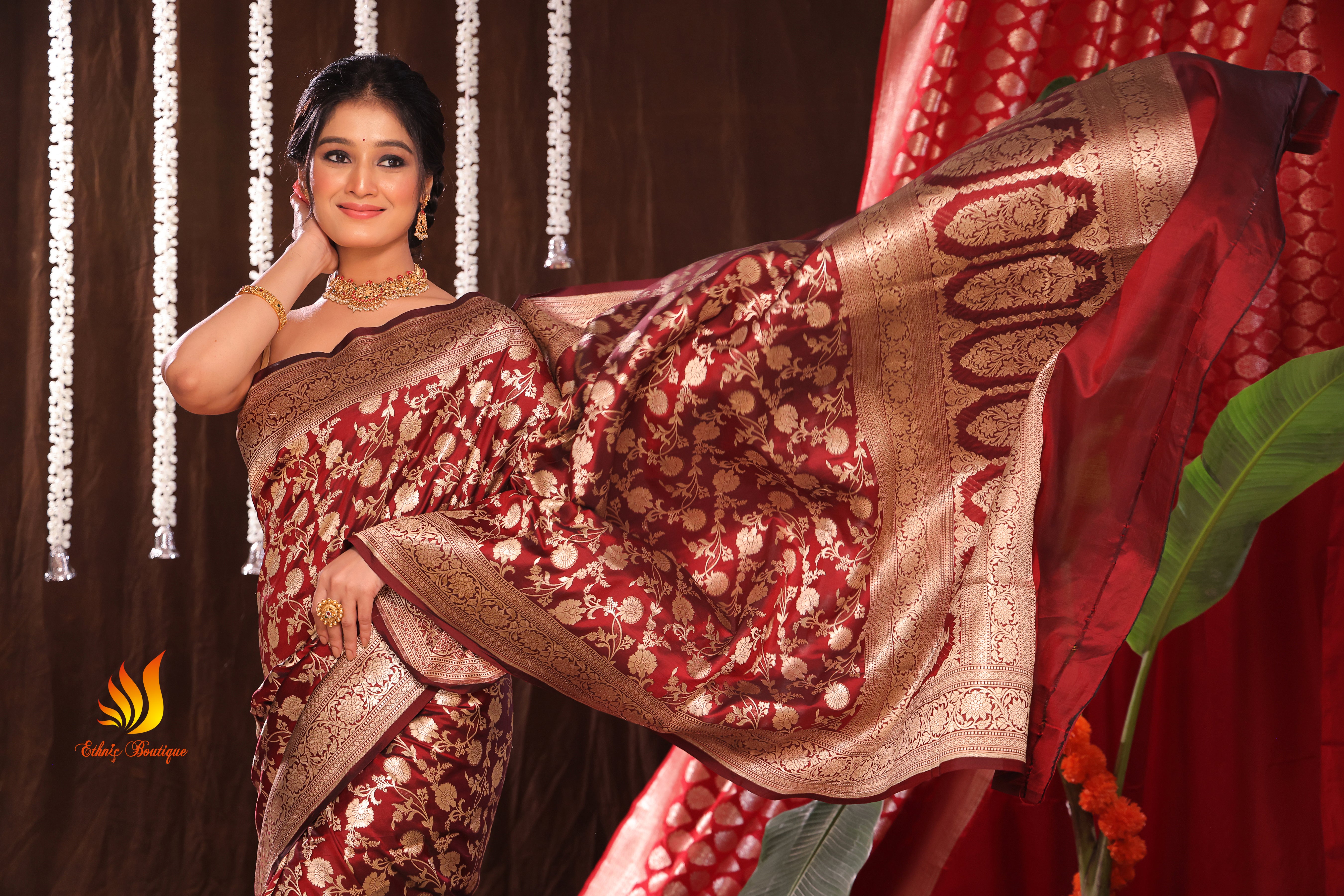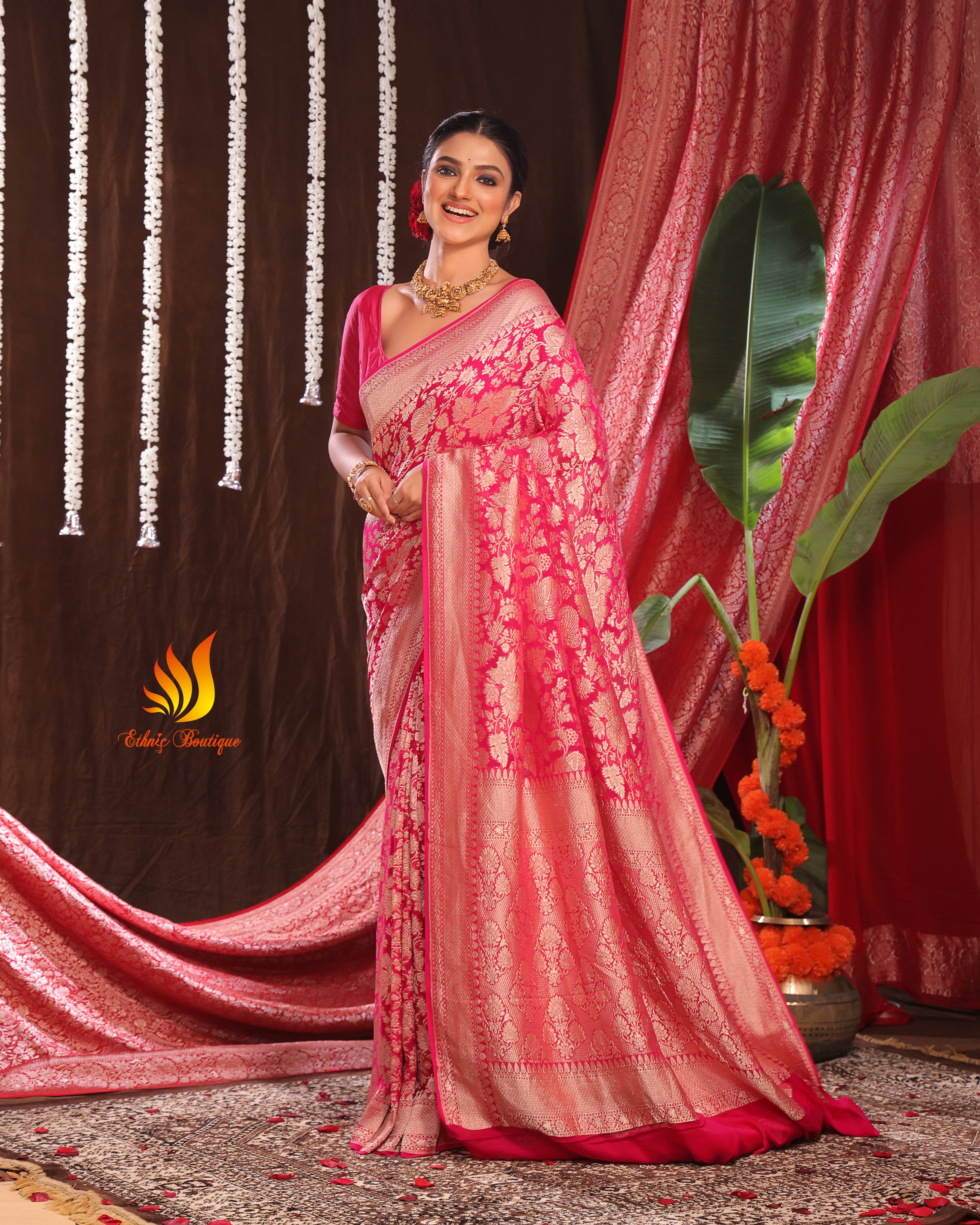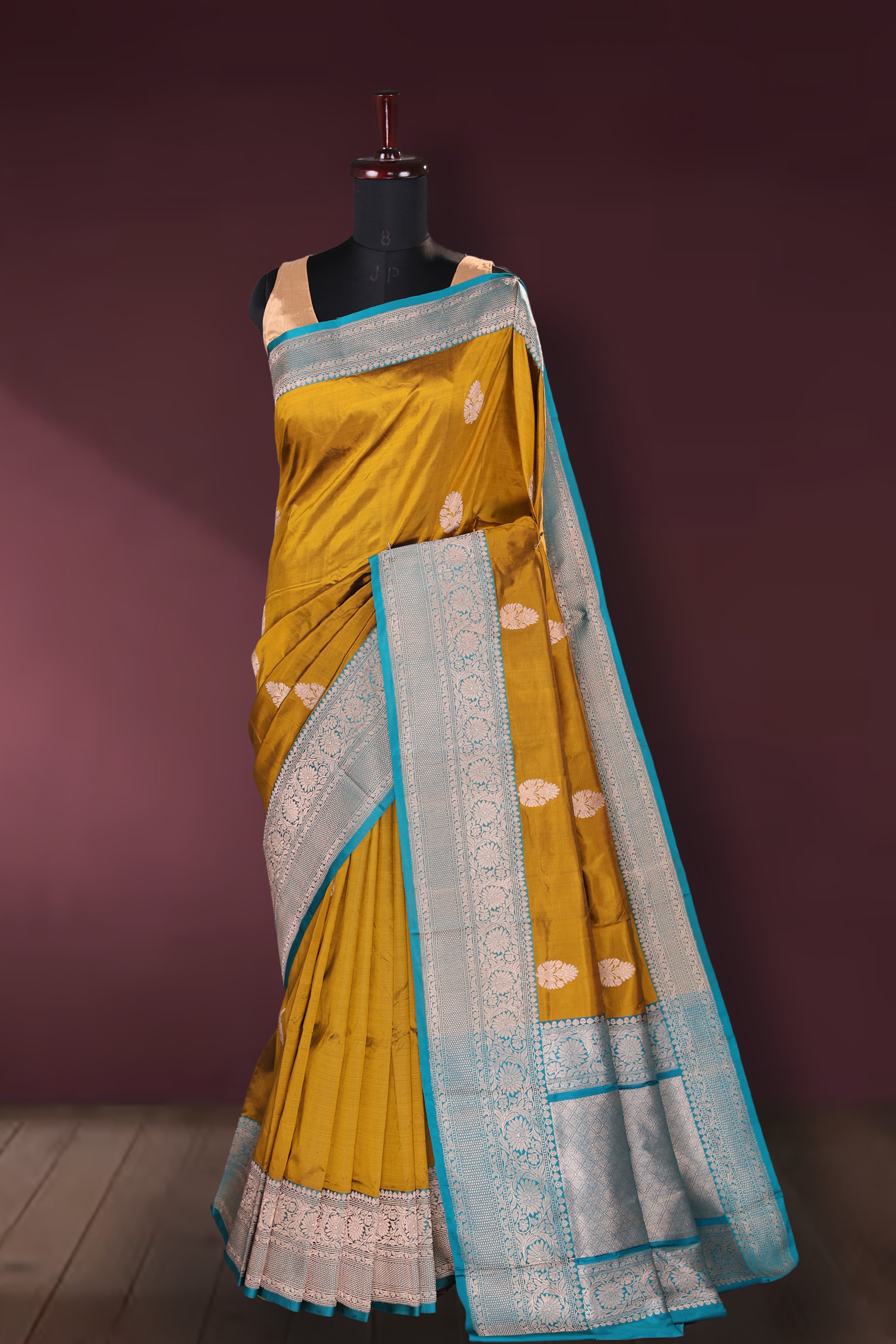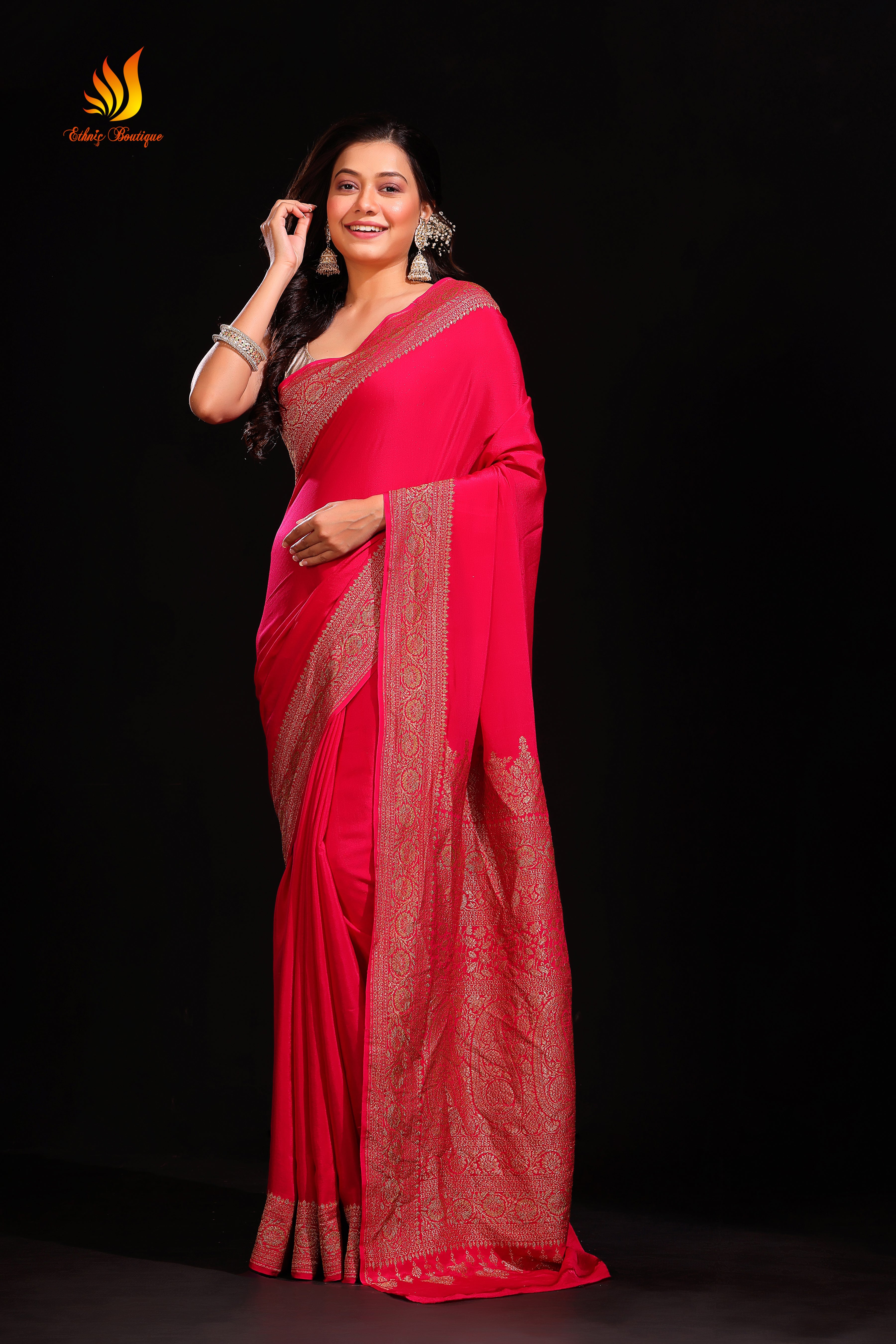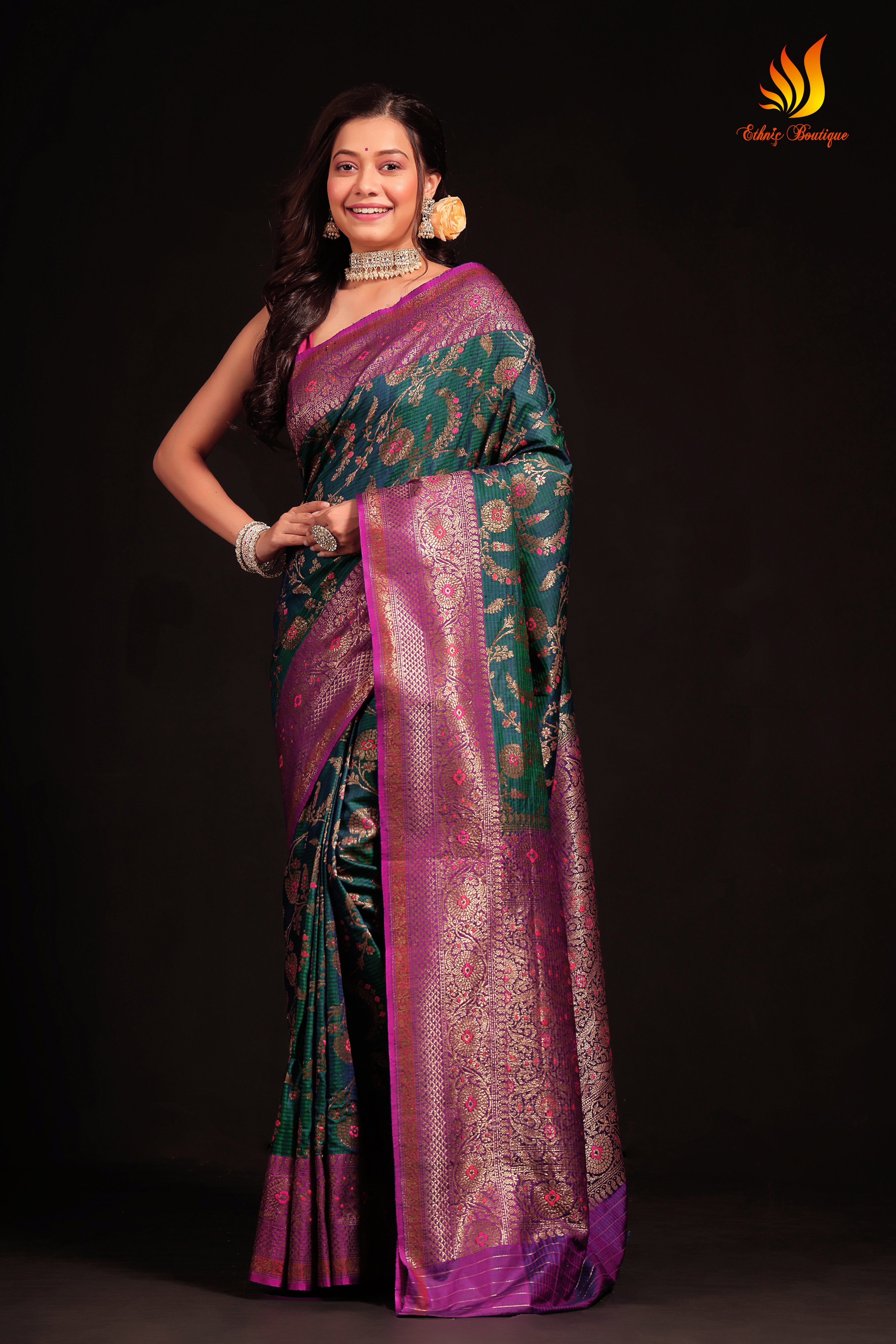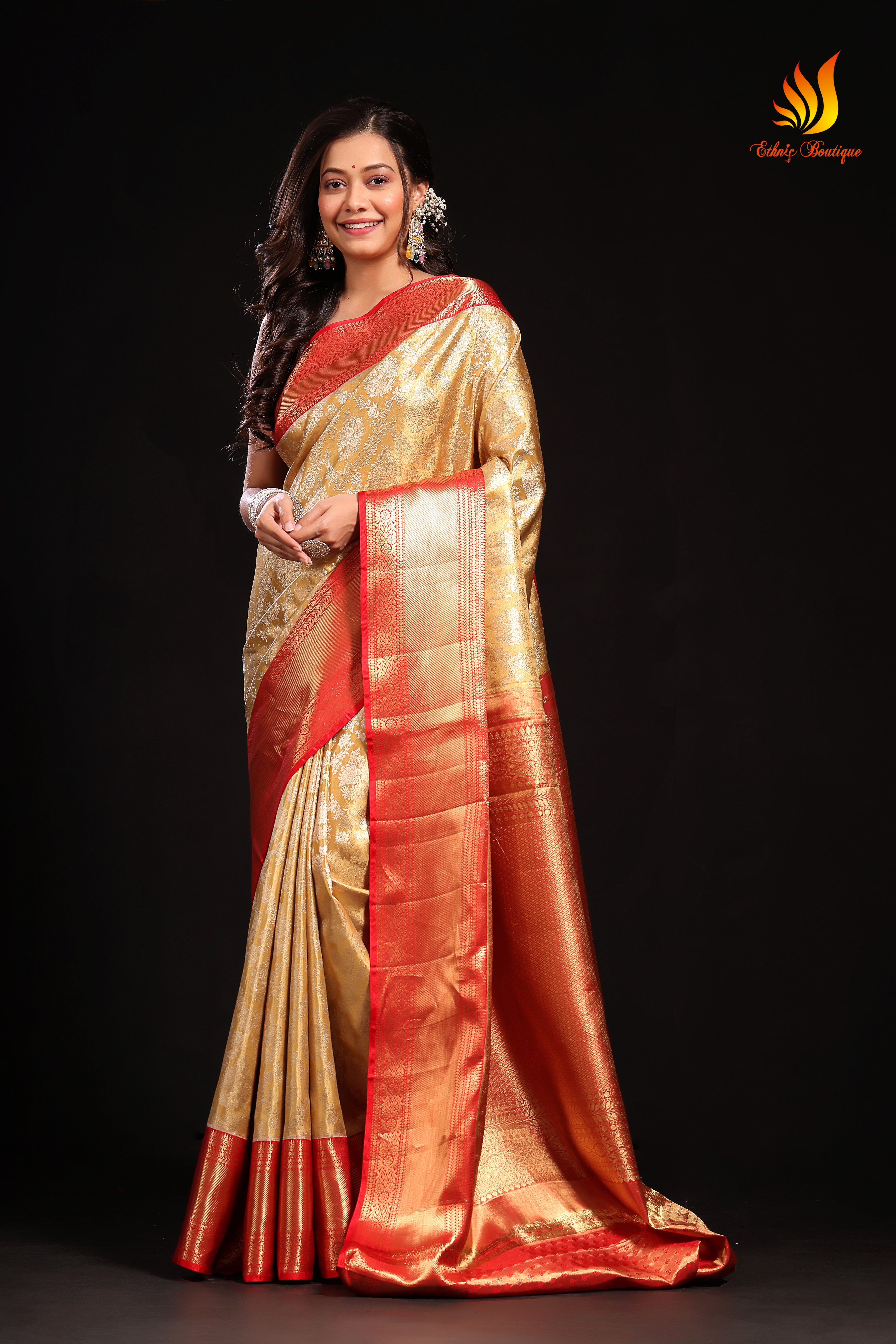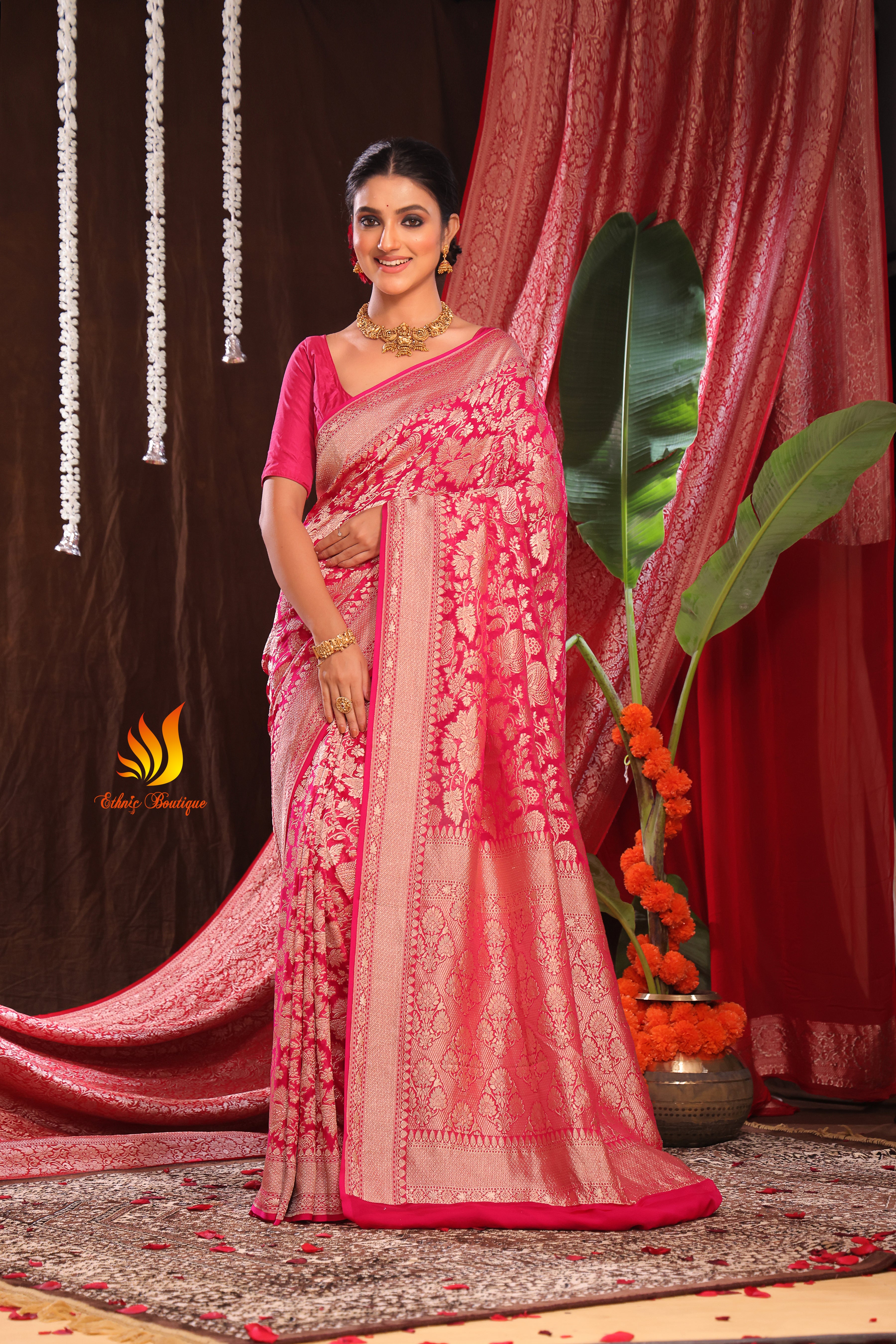A Chikankari saree is a traditional Indian saree that features intricate hand-embroidered designs known as Chikankari. This form of embroidery originates from Lucknow, a city in northern India, and is renowned for its delicate and fine threadwork. Chikankari is usually done with white thread on light-colored fabrics, although it can also be done in other colors and on various fabrics, including silk, chiffon, georgette, cotton, and organza.
Key Features of a Chikankari Saree:
-
Chikankari Embroidery:
-
Chikankari is a type of hand-embroidery that involves various stitches like phanda, chikan, keel kangan, jaali, murri, and more, creating floral, paisley, and geometric patterns.
- The technique is delicate, with each stitch meticulously done by hand, making each Chikankari saree unique.
-
White thread on light-colored fabrics, like pastels, ivory, or soft blues, is the classic combination, but modern designs may feature vibrant colored threads or contrast designs.
-
Fabric Choices:
-
Chikankari sarees can be crafted from a wide range of fabrics:
-
Cotton: Often chosen for summer wear, providing a light, breathable, and comfortable option.
-
Georgette and Chiffon: These sheer fabrics are often used for elegant and festive occasions.
-
Silk: Provides a more luxurious feel, making it a popular choice for weddings and receptions.
-
Organza: Adds a soft, sheer effect and is used for a more delicate look.
- The fabric is chosen to enhance the beauty of the intricate Chikankari embroidery.
-
Design and Patterns:
- The patterns on a Chikankari saree are mostly floral, botanical, or paisley designs, but modern interpretations may feature abstract or geometric patterns.
- The embroidery often covers the entire body of the saree, or it may focus on the pallu, border, or just the edges. More intricate designs are often used on the pallu and border to give a regal look.
- Traditional designs include floral vines, peacocks, lotus flowers, paisley motifs, and geometric patterns.
-
Colors:
- Traditionally, Chikankari sarees are created with white thread on light-colored fabrics, but modern versions can feature vibrant embroidery in colors like gold, silver, red, blue, or pastels to match contemporary tastes.
- The color contrast between the base fabric and embroidery thread can vary, with soft, pastel sarees offering an elegant, subtle appeal, while bold, colored threads can create a striking contrast.
-
Occasions:
-
Chikankari sarees are perfect for both casual and formal occasions:
- For casual wear, cotton Chikankari sarees are ideal for day events, family functions, and festivals.
-
Silk or georgette Chikankari sarees are excellent for weddings, receptions, and evening parties, offering a more formal, festive look.
- The delicate embroidery and ethereal appeal of Chikankari sarees make them suitable for cultural events, religious ceremonies, and traditional celebrations.
-
Drape and Fall:
- Chikankari sarees, especially those made from cotton or georgette, tend to have a soft, graceful drape. The fabric falls beautifully, giving a comfortable yet elegant look.
- The embroidered sections of the saree—whether on the border, pallu, or body—are light enough to not weigh down the fabric, ensuring the saree moves with grace and fluidity.
-
Comfort:
-
Cotton Chikankari sarees are breathable and lightweight, making them comfortable for long wear, especially in summer or hot climates.
-
Georgette, chiffon, and silk Chikankari sarees are slightly more delicate but are still designed to be comfortable, especially for evening functions and festivals.
- The handwork in Chikankari ensures that the fabric retains its softness and comfort, even after multiple washes.
-
Craftsmanship and Artistry:
-
Chikankari is a highly skilled craft, and the embroidery can take several days or even weeks to complete, depending on the complexity of the design. It is done using needle and thread, and the process requires immense attention to detail.
- The handmade nature of Chikankari makes each saree a unique piece of wearable art, with every stitch contributing to the overall beauty.
Summary:
A Chikankari saree is a symbol of elegance and intricate craftsmanship. With its delicate hand-embroidery, the saree exudes a traditional yet timeless charm. Chikankari embroidery, whether done in white thread on pastel fabrics or vibrant-colored threads on other fabrics, adds a unique, artisanal touch to the saree, making it perfect for a range of occasions from weddings to festivals. Whether you choose a cotton or silk Chikankari saree, the soft drape, delicate embroidery, and elegant appeal make it a perfect choice for anyone seeking a saree that combines heritage with sophistication.
